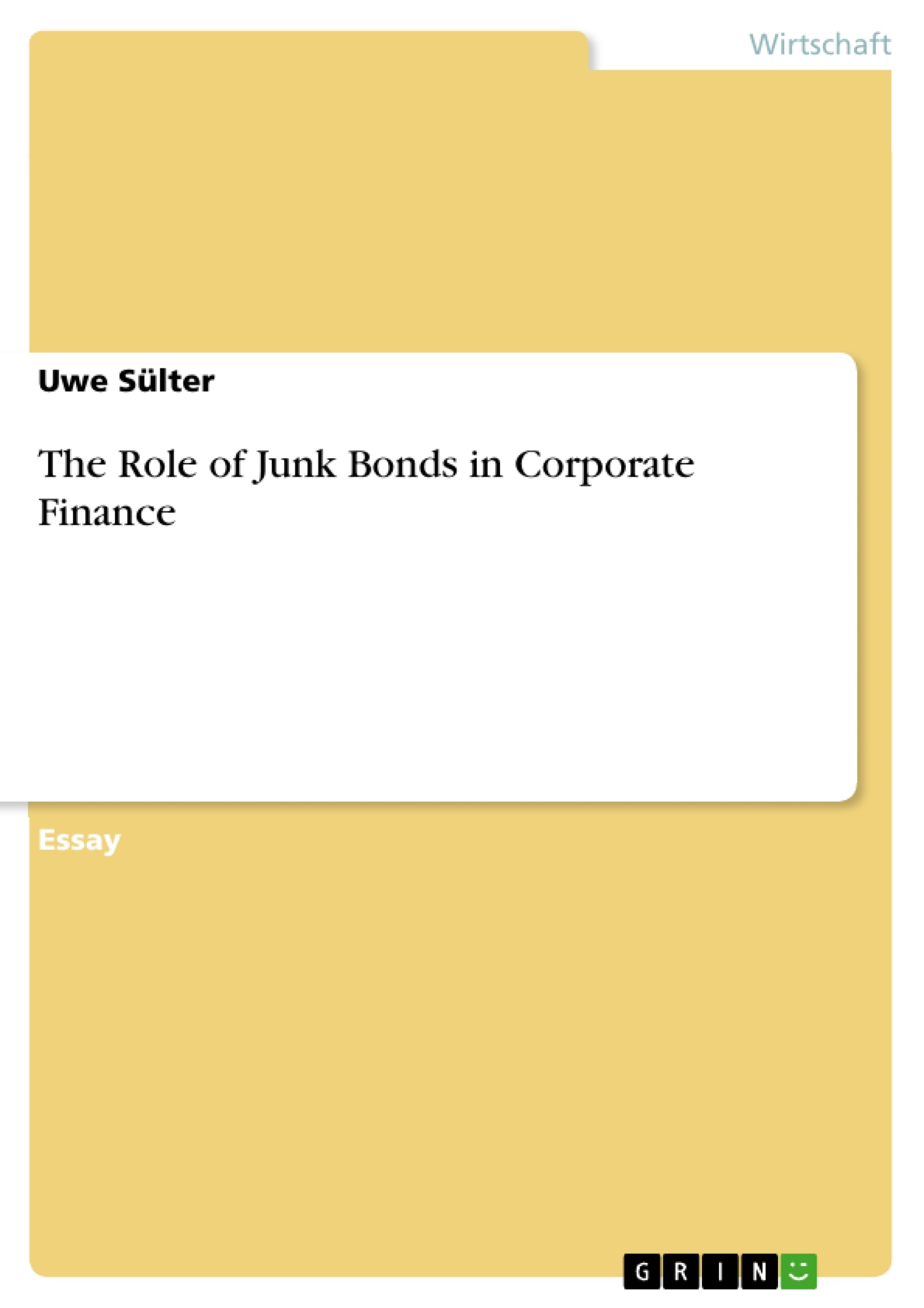Junk bonds in corporate finance seen from the perspective of an issuer and an investor define the assignment scope. Giving both some hints when to use junk bonds is the main question to this assignment.
From the issuer point of view it is important to have safeguarding mechanism inside a bonds contract. Having a callable option on the bond is target number one. Information have to be past to the investor, putting the notice about the high interest rate into the view of the investor.
Information around the issuing firm according her actual economical status and her strategy are the most important source for any decision an investor should have before buying a junk bond. Taking care of an issuer safe guarding mechanisms could be a big pitfall to an investment. Taking a close look to the portfolio will help to find the right proportion for junk bonds regarding the selected return.
Inhaltsverzeichnis
- Executive Summary
- Table of contents
- List of abbreviations
- List of figures
- List of tables
- 1. Introduction
- 2. Corporate finance
- 2.1. Definition of the term corporate finance
- 2.2. Long term and short term decisions
- 2.3. Sources of finance
- 3. Junk bonds
- 3.1. Definition of junk bonds
- 3.2. Fallen angels
- 3.3. History of junk bonds
- 4. Junk bonds in corporate finance
- 4.1. Raising capital using junk bonds
- 4.2. Junk bonds as part of the portfolio
- 4.3. Recommendations
- 5. Conclusion
Zielsetzung und Themenschwerpunkte
Diese Arbeit befasst sich mit der Rolle von Junk Bonds in der Unternehmensfinanzierung. Sie betrachtet den Einsatz von Junk Bonds sowohl aus der Perspektive des Emittenten als auch des Investors. Ein zentrales Ziel ist es, Hinweise darauf zu geben, wann der Einsatz von Junk Bonds sinnvoll ist.
- Definition und Eigenschaften von Junk Bonds
- Die Rolle von Junk Bonds bei der Kapitalbeschaffung
- Die Integration von Junk Bonds in ein Anlageportfolio
- Die Risiken und Chancen von Junk Bonds für Emittenten und Investoren
- Empfehlungen für die Verwendung von Junk Bonds in der Unternehmensfinanzierung
Zusammenfassung der Kapitel
Das erste Kapitel führt in das Thema Junk Bonds ein und stellt die zentralen Fragen der Arbeit vor. Es beleuchtet die historische Entwicklung von Junk Bonds und ihre Bedeutung in der modernen Finanzwelt.
Das zweite Kapitel gibt eine Einführung in die Unternehmensfinanzierung. Es werden die wichtigen Bereiche der Finanzierungsentscheidungen, wie z. B. kurz- und langfristige Entscheidungen, sowie verschiedene Finanzierungsquellen vorgestellt.
Das dritte Kapitel widmet sich der Definition und Charakterisierung von Junk Bonds. Es werden die Eigenschaften, die Geschichte und die verschiedenen Arten von Junk Bonds behandelt, insbesondere die "Fallen Angels".
Das vierte Kapitel beleuchtet die Rolle von Junk Bonds in der Unternehmensfinanzierung aus der Perspektive des Emittenten. Es werden die Möglichkeiten zur Kapitalbeschaffung mithilfe von Junk Bonds sowie die Einbindung von Junk Bonds in ein Anlageportfolio aus der Sicht des Investors diskutiert.
Schlüsselwörter
Die Arbeit konzentriert sich auf die folgenden Schlüsselbegriffe und Themenbereiche: Junk Bonds, Unternehmensfinanzierung, Kapitalbeschaffung, Risikomanagement, Anlagestrategie, Markowitz-Portfolio-Theorie, Fallen Angels, Ratingagenturen, Default-Risiko, Investment-Strategien.
- Citar trabajo
- Uwe Sülter (Autor), 2009, The Role of Junk Bonds in Corporate Finance, Múnich, GRIN Verlag, https://www.grin.com/document/141832



